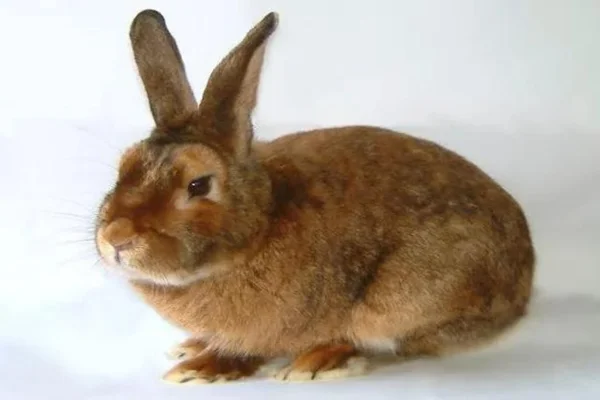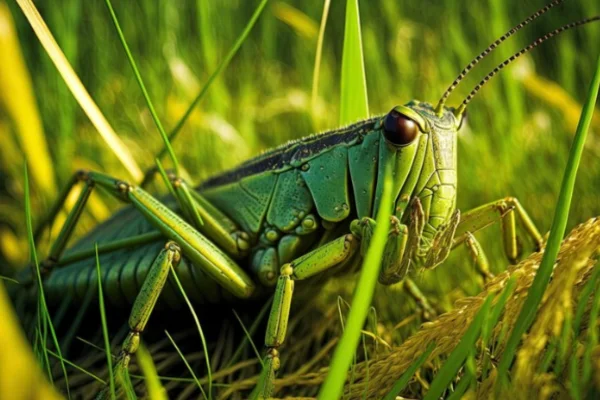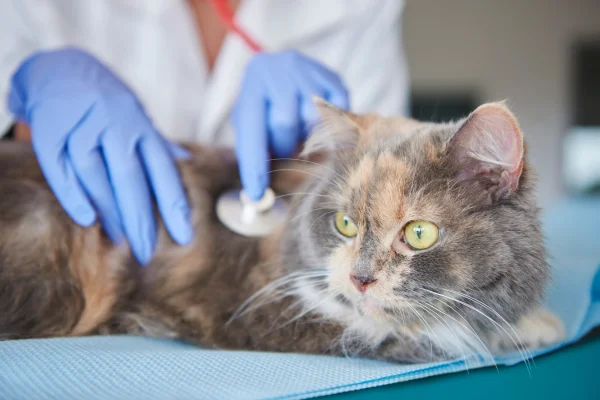The Beauty and Charm of the Satin Rabbit
Rabbits are adorable and popular pets, and among the many breeds available, the Satin Rabbit stands out for its unique coat. With its shiny, silky fur, this breed is especially prized both in shows and as pets. In this article, we'll explore the characteristics, care and history of this fascinating breed.
This breed captivates with its beauty and personality. Originally from the United States, this rabbit has become a popular choice for breeders and show enthusiasts due to its unique, shiny coat. In addition to its stunning appearance, the Satin Rabbit is also known for its friendly and docile temperament, making it an excellent pet.
Origin and History
The Satin Rabbit appeared in the United States in the 1930s. The development of this breed was a happy accident: a breeder was trying to improve the coat quality of his Havana rabbits and noticed a rabbit with exceptionally shiny and silky fur. This rabbit was then crossed with others, and the Satin breed was born. It was officially recognized by the American Rabbit Breeders Association (ARBA) in 1956.
Contents
The story of the Satin Rabbit is an example of how genetic selection can result in unique physical characteristics. The mutation that resulted in the shiny coat was carefully cultivated and improved over the years, resulting in the breed we know today. ARBA recognizes several color varieties within the Satin breed, including black, blue, chocolate, lilac, red, Siamese and white, among others.
Physical characteristics
The most striking feature of the Satin Rabbit is undoubtedly its fur. The coat is incredibly shiny due to a genetic mutation that alters the structure of the fur, making it thinner and more translucent. This allows light to reflect in a unique way, giving the coat its silky, shiny appearance.
In addition to their coat, Satins are known for their variety of colors. ARBA recognizes several colors, including black, blue, chocolate, lilac, red, Siamese, white, among others. They have a compact and muscular body structure, usually weighing between 3 and 4.5 kg.
The Satin Rabbit's body is medium-sized, with a compact and muscular structure. Its ears are erect and medium-sized, complementing its balanced appearance. The eyes may vary in color depending on the coat color, but they are always expressive and alert.
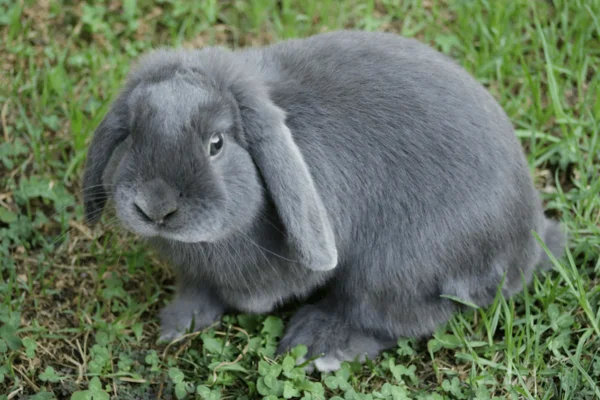
Temperament and Behavior
Satin rabbits are known for their friendly and docile temperament. They are social animals who enjoy interacting with their owners and can be trained to use a litter box, respond to their names and even perform simple tricks. They are active and curious, needing plenty of space to explore and toys to keep them entertained.
In addition, Satins are intelligent rabbits, capable of forming strong bonds with their owners. They enjoy human company and can be very affectionate. However, like all rabbits, they need to be handled with care and respect to avoid stress or injury.
Necessary care
Caring for a Satin Rabbit involves paying attention to its food, hygiene and environment. Here are some tips to ensure that your rabbit lives a healthy and happy life:
FoodThe diet of a Satin Rabbit should be rich in high-quality hay, which makes up the majority of their diet. They can also eat a variety of fresh vegetables and pellets specifically for rabbits. Fresh water should always be available.
HygieneBecause of their shiny coat, it is important to keep their fur clean and well groomed. Brushing your rabbit regularly will help remove loose hair and prevent hairballs from forming in its stomach.
Habitat: Satin rabbits need adequate space to move around. A spacious cage with a safe exercise area is ideal. They also like to have toys and areas to hide.
HealthLike all rabbits, Satins need regular check-ups with a vet specializing in exotic animals. They should be vaccinated and wormed according to veterinary recommendations.
Exercise: Rabbits are active animals that need space to run around and play. It is essential to provide a safe environment where they can exercise daily to avoid health problems related to a lack of physical activity.
Social interaction: Satin rabbits are social and enjoy the company of other rabbits and their owners. Spending time interacting with your rabbit, providing it with toys and activities, is essential for its emotional and mental well-being.
Satin rabbits as pets
Satin rabbits are excellent pets for families and individuals. Their friendly temperament and charming appearance make them popular with rabbit lovers. However, it is important to remember that they require specific care and a commitment to their well-being. Before adopting a Satin, it is crucial to do thorough research and ensure that you can meet its needs.
Ideal environment for a Satin Rabbit
Creating a safe and comfortable environment for a Satin Rabbit is essential for its well-being. The cage should be spacious, allowing the rabbit to move around freely. The floor should be covered with suitable material, such as hay or sawdust, which is comfortable and absorbs moisture.
In addition, it is important to provide areas for the rabbit to hide and feel safe. Rabbits are natural prey and therefore need places where they can hide and relax. Providing toys and items to gnaw on helps to keep the rabbit entertained and to wear down its teeth, which are constantly growing.
Proper nutrition
A Satin Rabbit's diet is crucial to its health and well-being. High-quality hay should be the basis of the diet, helping with digestion and tooth wear. Fresh vegetables, such as carrots, dandelion leaves and spinach, can be offered daily.
Specific pellets for rabbits should complement the diet, providing the necessary nutrients that hay and vegetables may not fully supply. It is important to avoid foods high in sugar and carbohydrates, such as fruit and grains, which can cause digestive problems and obesity.
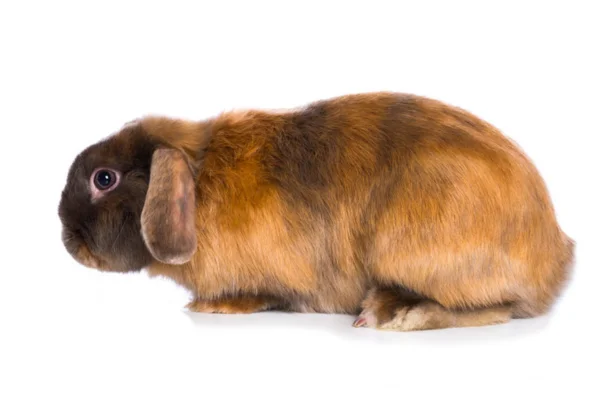
Veterinary Health and Care
Maintaining your Satin Rabbit's health requires regular visits to the vet. Rabbits need to be vaccinated against common diseases and dewormed regularly. In addition, regular check-ups help to identify and treat health problems before they become serious.
It is essential to monitor your rabbit's behavior for signs of illness. Loss of appetite, changes in urination or defecation habits, and lethargic behavior can indicate health problems that require immediate veterinary attention.
Curiosities and myths
There are various curiosities and myths about Satin Rabbits. A common myth is that all rabbits like to be held and stroked, which isn't true for everyone. While many Satins are friendly, each rabbit has its own personality and some may not like being handled excessively.
Another interesting fact is that Satins' fur is not only beautiful, but also functional. The unique structure of the fur helps regulate body temperature, keeping the rabbit warm in winter and cool in summer.
Conclusion
The Satin Rabbit, with its shiny, silky fur, is a breed that delights both at shows and as a pet. Its history, unique physical characteristics and friendly temperament make it a wonderful choice for anyone looking for a special pet rabbit. Caring for a Satin requires dedication, but the reward is a loyal and charming companion.
If you're thinking of adding a Satin Rabbit to your family, remember to consider all aspects of its care and make sure you're prepared to offer it the attention and love it deserves. With the right care, a Satin Rabbit can bring a lot of joy and beauty into your life.
Thank you for visiting us and check out our other work

